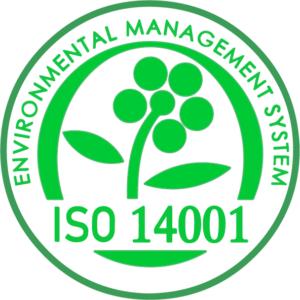Call Us: +201000223355
ISO 14001: 2015
ISO 14001:2015 is an international standard that specifies the requirements for an effective environmental management system (EMS). This standard helps organizations enhance their environmental performance, comply with legal and regulatory requirements, and achieve environmental objectives. It emphasizes a systematic approach to environmental management, integrating it into business processes and aligning it with the organization's strategic direction.

What is ISO 14001:2015?
ISO 14001:2015 is an international standard that specifies the requirements for an effective environmental management system (EMS). This standard helps organizations enhance their environmental performance, comply with legal and regulatory requirements, and achieve environmental objectives. It emphasizes a systematic approach to environmental management, integrating it into business processes and aligning it with the organization’s strategic direction.
Key Features of ISO 14001:2015:
-
Context of the Organization: This standard requires organizations to understand the internal and external factors that can impact their EMS. It encourages a broader perspective, considering the needs and expectations of interested parties.
-
Leadership and Commitment: ISO 14001:2015 emphasizes the importance of top management in driving the EMS. Leadership must demonstrate commitment, ensure the integration of the EMS into business processes, and allocate necessary resources.
-
Risk-Based Thinking: The standard introduces a risk-based approach to environmental management, requiring organizations to identify and address risks and opportunities that can affect their EMS’s performance.
-
Lifecycle Perspective: Organizations are encouraged to consider the environmental impacts of their products and services from a lifecycle perspective, from raw material acquisition to disposal.
-
Operational Control: The standard requires the establishment of processes and controls to manage significant environmental aspects and comply with legal and other requirements.
-
Performance Evaluation: Organizations must monitor, measure, analyze, and evaluate their environmental performance. This includes conducting internal audits and management reviews to ensure the EMS’s effectiveness and continual improvement.
-
Continual Improvement: ISO 14001:2015 promotes a culture of continual improvement, requiring organizations to take action to enhance their EMS and achieve better environmental outcomes.
Benefits of ISO 14001:2015 Certification:
- Improved Environmental Performance: Organizations can systematically manage and reduce their environmental impact, leading to enhanced environmental outcomes.
- Regulatory Compliance: The standard helps organizations stay compliant with environmental laws and regulations, reducing the risk of non-compliance penalties.
- Cost Savings: Efficient resource use and waste reduction can lead to significant cost savings.
- Enhanced Reputation: ISO 14001:2015 certification demonstrates a commitment to environmental responsibility, boosting reputation among customers, partners, and stakeholders.
- Risk Management: Identifying and addressing environmental risks proactively helps prevent incidents and liabilities.
- Employee Engagement: Involving employees in environmental initiatives fosters a sense of ownership and engagement, boosting morale and productivity.
ISO 14001:2015 is a comprehensive standard that empowers organizations to manage their environmental responsibilities effectively. By achieving certification, organizations can demonstrate their commitment to sustainability, enhance their reputation, and achieve significant operational benefits. Embracing ISO 14001:2015 is a strategic decision that contributes to long-term environmental stewardship and business success.